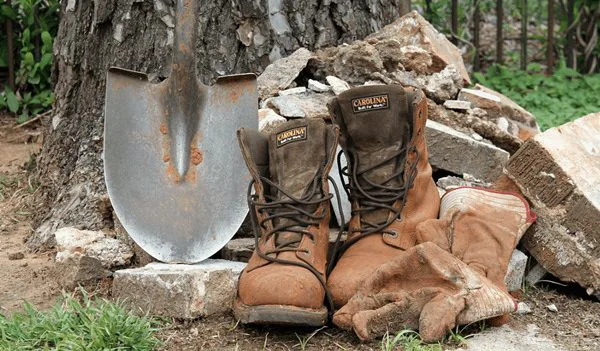Workplace safety is of vital importance for individuals whose job involves occupational hazards in the form of physical and chemical dangers. Apart from wearing protective equipment, workers are required to wear safety footwear as well.
Work boots are available in a variety of models, designed to fit the safety requirements of various occupations. These are made from a wide range of materials to provide the necessary anti-slippery, shock-resistant, waterproof, puncture-resistant, and cut-resistant benefits. In contrast, the method of boot construction is responsible for providing wearers with comfort and durability.
The following tips will help you choose the right shoes for your job.
How To Choose The Right Shoes For Your Job?
Consider the hazards of your occupation
When looking for the perfect pair of work shoes, you’re supposed to consider the hazardous nature of your occupation. Although most workers opt for steel-toe boots as means of protection, these aren’t exactly protective against different sorts of hazards. Its paramount for the model you choose to address the appropriate risk, as not all occupations involve the same hazardous scenarios.
For instance, electrical workers are strongly advised to purchase a pair of electrical hazard boots, vital for anyone operating high-voltage machinery or connecting electrical circuits. The soles and heels of these work boots are made from shock-resistant, non-conductive material so as to minimize the risk of electrocution.
In addition, individuals whose occupation involves working with explosives or other types of flammable compounds are recommended to wear electrically conductive footwear. The role of these boots is to impede static buildup on ones body, which could eventually result in an explosion. Additionally, these workers are advised against wearing silk, nylon, or wool socks on the job, given their ability to produce static electricity. Click here to learn more about the causes, removal, and prevention of static electricity.

Moreover, workers susceptible to getting injured by falling objects on the job should consider purchasing safety-toe shoes. These work boots are equipped with toe capping made from steel, composite material, or aluminum. Steel-toed models are believed to provide the best protection, whereas the aluminum-toed ones are considered to be the least protective.
Chainsaw operators are at constant risk of getting injured by rotating blades, hence requiring both protective clothing and footwear. There are special models of cut-resistant boots made from high-performance materials like polyethylene, polyvinyl acetate, Kevlar, Twaron, etc. These materials are specially designed to provide a protective barrier for the purpose of preventing chainsaw accidents.
Furthermore, puncture-resistant footwear is essential for construction workers and other individuals at risk of stepping on sharp objects, such as nails and screws. The midsole of puncture-resistant boots contains a steel plate that prevents sharp objects from puncturing through the sole. Wearing regular footwear is likely to result in foot injuries.
Slip-resistant work shoes are crucial for individuals of various occupations, such as healthcare, kitchen, or factory workers. The outsoles of such shoes are made from slip-resistant materials like rubber, which provide a secure grip when exposed to water and oil. Consequently, the risk of slip and fall accidents is virtually non-existent.
Outdoor jobs require workers to wear insulated, waterproof footwear to protect their feet against moisture and the cold. Waterproof work boots keep the feet warm and dry, thus preventing frostbite, fungus growth, and mold.
Ultimately, people whose occupation involves working with molten metals have to protect their feet against extreme heat. Hence, they need to wear foundry footwear, equipped with the right insulation to prevent burns.
Consider the boot construction
Another important thing to consider when purchasing a pair of work footwear is the construction method. The way in which work shoes are constructed has a direct impact on the durability and comfort they provide to wearers.
Welt construction is believed to be an effective technique that provides long-lasting results. This technique involves the use of a welt, referring to a piece of leather cloth placed between the sole and upper part of the shoe.
Additionally, some welt-construction models are double-stitched for maximal longevity, holding the outsole, innersole, and upper together. The largest part of waterproof footwear is made with welt construction, particularly designed for rugged environments. These are the ideal solution for individuals working in heavy-duty jobs.
Another popular construction technique is the direct-attach method, using rubber to manufacture the soles. This footwear is designed to be lightweight, long-lasting, and highly durable. Its suitable for workers who are constantly on the move, looking for ankle support and stability.
Lastly, cementing is another commonly used construction technique, using adhesive to attach the outsole of the shoe to the upper. Its perhaps the most affordable variant, appropriate for workers who stand on their feet for prolonged periods.
Bottom line
Investing in safety footwear is essential for preventing hazardous scenarios on the job.
Make sure you choose the right features!


0 Comments